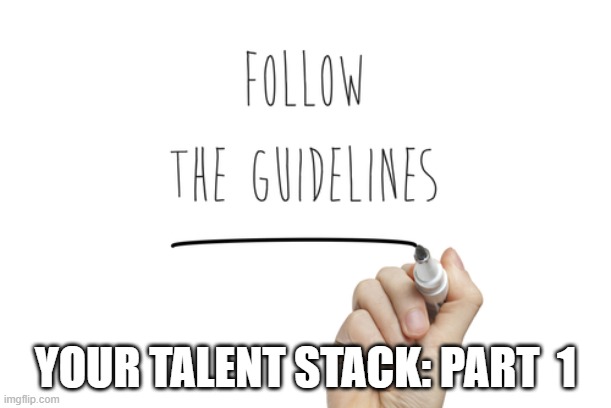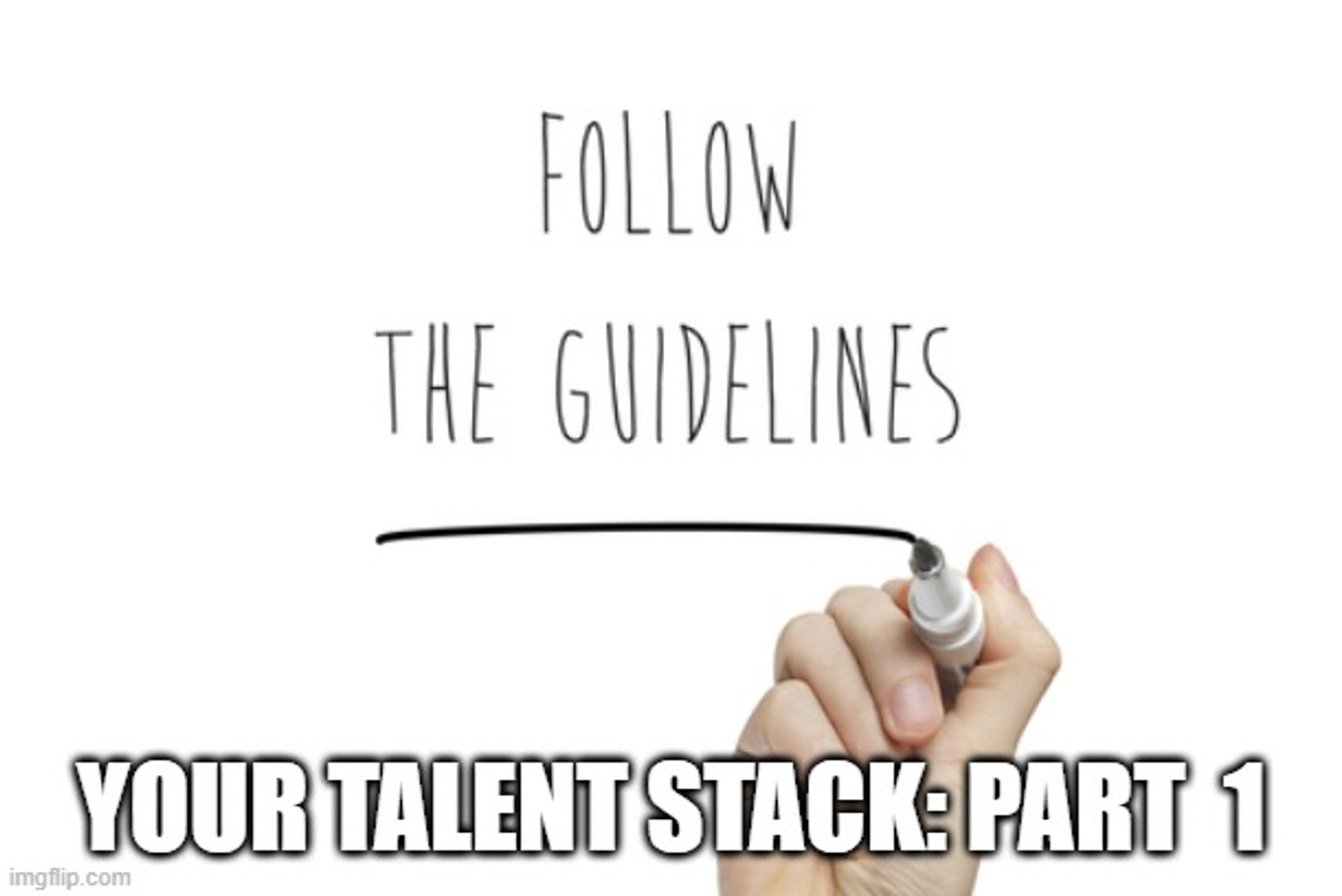
What is Your Talent Stack?
Part 1: Respect
You have one shot at making a first impression. We have all heard that. Many writers have not.
I have been "that guy" -- the gatekeeper -- for nearly three decades. I get asked about the submission process every time I speak, regardless of the topic. You must get inside the door to have a shot at being published. Put your best foot forward.
First impressions are everything. When you walk into a room, you get a vibe for people right away. Nearly instantly. It is human nature. You can be wrong, but it is impossible not to have a first impression.
Here are a few tips to get INSIDE the door.
Every publishing company has its own way of doing things, a process that works for that publisher. We are overwhelmed with submissions, so our guidelines make our workflow manageable and efficient. Many of the hoops and mazes established to weed out manuscripts are also designed to filter out . . . authors.
So what is the first thing I notice about you? How closely you respected our submission guidelines.
An author who does not follow our protocol at the outset is not going to be one who follows it closely later when we have to work through the hard “making sausage” parts of producing a good book. If we do not want to see your manuscript at the outset, it does not mean attach it anyway.
Cutting corners or writing something up differently because you think it is smarter, wiser, better, or more efficient, will get the door slammed in your face.
There are a few key components that go along with this.
1. Open with a salutation that does not include “Hey,” or worse still, is left blank, OR, even worse than that, is addressed to the wrong publisher. We may live in a more informal world, but it is always safer to error on the side of formality until it is clear you no longer have to do so.
2. Proofread what you submit and write in complete sentences. We all make mistakes, but when you are submitting a formal proposal to get published, mistakes leap off the page. Spell check at the least. Avoid using texting lingo, like the one I received yesterday: “IMHO you are the right publisher 4 me.
All of this is elementary, right? I think so, and yet I see all these issues and more daily.
Two more. Make sure the genre you are proposing is a genre the publisher publishes. If it isn’t, it means you didn’t pay any attention to us. If you don’t care who we are, I don’t care what you write.
Last, make it much more likely that you get some level of consideration and a response by letting the publisher know yours is not a multiple submission. If they ask, tell them. If they don’t ask, put it in your opening sentence or closing sentence. Let them know you are giving them an exclusive crack at your work, and that you appreciate their time.
No publisher wants to spend an hour or two on your proposal, or weeks reviewing a manuscript, and perhaps even sending it out of house to review, only to accept it and discover another publisher said “yes” the day before. Bridge, burned.
Often the acquisition process is akin to alchemy. Call it a gut
feeling, call it reading tea leaves, call it learning the hard way, but over
the years I have come to understand how to “read” an author before I read a
word of his or her manuscript.
Talent Stack 1: Respecting the submission process means you are more likely to
be flexible, helpful, a good team member, and a winner. Give yourself the best
shot at being offered an invitation inside the house.
We are just getting started. Stay tuned for the deeper dives. . .
-- tps

